The Ministry of Defence is evaluating the use of commercial vessels to supplement the Royal Fleet Auxiliary’s (RFA) Fleet Solid Support (FSS) capability in non-contested environments, according to Defence Minister Luke Pollard.
Pollard confirmed that the MOD “continues to assess options for augmenting Fleet Solid Support capabilities in non-contested environments,” stating that commercial vessels are being considered for “low-risk logistical roles, offering potential benefits in cost and flexibility.”
The plan stems directly from the recommendations of the Strategic Defence Review 2025, which called for new approaches to delivering a “balanced and cost-effective fleet”. The RFA’s ships, crewed by professional seafarers, provide critical logistics, aviation, and medical support that underpin the Royal Navy’s operational reach.
Pollard added that “work is underway to establish assured access to UK-based shipping through strategic frameworks, supported by industry engagement via the Shipping Defence Advisory Council. These efforts aim to ensure readiness through identified vessels, trained crews, and secure communications infrastructure.”
Such arrangements could enable the RFA’s advanced Fleet Solid Support vessels to concentrate on supporting carrier and amphibious task groups, while commercial ships perform humanitarian, relief, and routine peacetime missions.
Three new FSS ships are being built under the £1.6 billion Team Resolute contract, led by BMT, Harland & Wolff, and Navantia UK. Once delivered, they will provide the Royal Navy with modern replenishment platforms capable of transferring ammunition, fuel, and stores at sea.



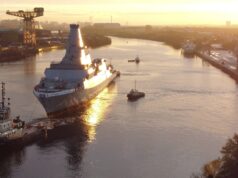

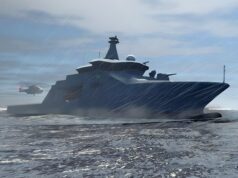
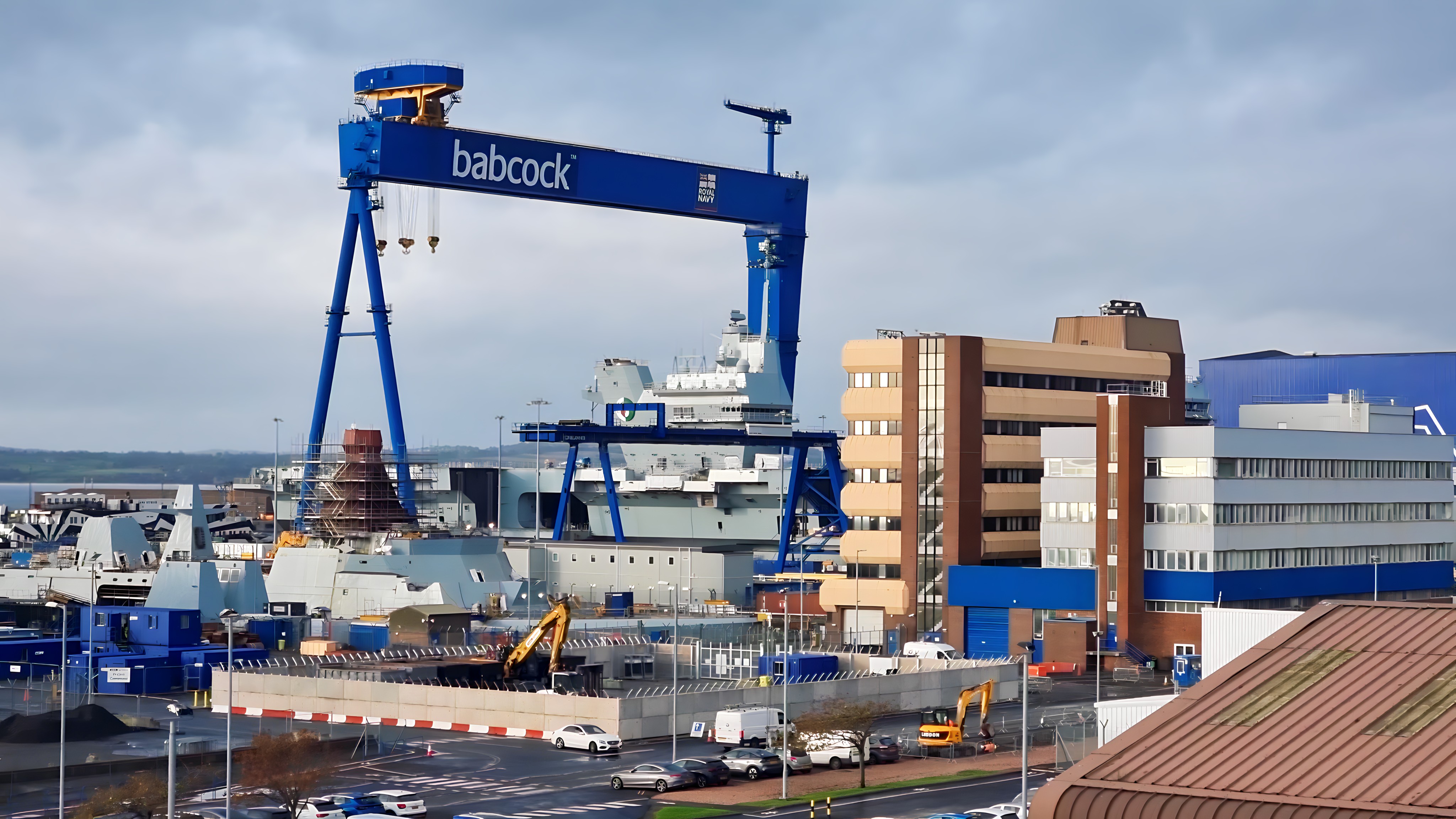

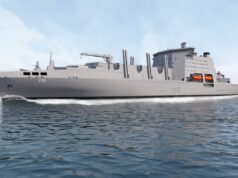


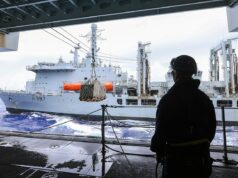


Makes good sense, plus the fact that these vessels could be quickly deployed.
Makes sense but how useful is a commercial vessel? It’s not like we have many ships in need of stores around the world. Is there anything commercial that has the transfer capability.
Easier to produce and install transfer capability than to build ships in the first place with the transfer capability.
Are you implying we don’t need FSSs in the first placer. I would argue you can’t have too many.
No, but 3 is more than enough considering the small size of the rest of the fleet. 2 is probably plenty.
Don’t be giving the MoD ideas Jim! Besides, not all 3 FSS are likely nor will be planned to be at sea at any one time. Isn’t there a rule of 3 with ships? 1 at high readiness, 1 at low readiness/light maintenance/crew training and the 3rd in deep maintenance? The article also states ” ….. while commercial ships perform humanitarian, relief, and routine peacetime missions”, so these ships aren’t likely to be doing RAS operations but post-hurricane relief etc, that’s how I read it anyway.
Yes, typically only 1 ship in 3 is at sea in operations. Id imagine the FSS would be ship to ship resupply and the commercial for ship to shore so the FSS aren’t “wasted” on the easier jobs
That’s a rule for warships, commercial vessels can and do spend the majority of their time at sea.
The FSS is only really required to support the carrier’s and we only have two.
The Tides are able to support almost any other force we would deploy.
Makes sense until it doesn’t and ships are lost and then commercial ships are used to plug the gaps in reality all this is , is the government once again trying to get capabilities on the cheap I would say we haven’t seen that before but I would be lying from cheaply built ships that melt in fires to uniforms that melt onto the troops when there are fires to a rifle that ended up costing more than the most expensive rifle on the market just because it needed upgrading as u got it they tried to do it cheap the first time
The truth is simple: the UK can’t meet its defence commitment due to the growing economic troubles spreading across Europe. The hiring of commercial ships is probably our only option, considering the neglect of the FRA fleet in recent times. Sadly, we may witness in the following months the dismantling of Labour’s recent defence uplift as the cost of borrowing negates much of the Government’s promises. As for the defence of the UK, we will continue riding on a wing and a prayer.
I understand the position that the U.K. is in however I cannot accept it while we borrow money and give it away be it in overseas aid or hotels for migrants and welfare for migrants the government should put the armed forces before making sure some guy gets a iPhone and a fluffy pillow while in a hotel in the middle of a city
Labour will always put welfare before defence, they just don’t tell us so. I’m flabergasted, Europe has never been so exposed to the winds of war since WW2, yet defence has been neglected across the board and it took a plain-speaking US president to make us review our arsenals to find them wanting. Simply put, they are so depleted that it will take at least a decade to address half of what is required. The equation, ‘welfare before war,’ has never been so blatantly true.
Well Said ,totally agree…. But ships is ships. History tells that us british do kin miracles with anything that floats,
Well said
Yip – and politicians of both flavours continue to spout out that ‘defence of the realm’ is the first responsibility of government – what a joke!
It all sounds good at the time of crisis. Sadly, defence is the elephant in the room for most governments, and it only gets extra treatment when required to work…….simple really.
Does this mean procuring (so designing) new commerical spec ships for the RFA – i.e. cheaper due to lower spec, or buying commerical ships that are currently sailing, and crewing them with RFA sailors?
It means a Point style contract.
Given the rule of 3 only one FSS is likely to be available surging to two so it will be nailed to carrier that is deployed.
That’s what it made me think of.
The big difference there though is that RORO would only ever be depolying to uncontested ports – my only reservation is that having commerical spec FSS could be a problem if a BG or CSG came under fire at some point. I suppose their deployment would take this risk into account, although this philosophy does leave a margin for a pretty big potential boo boo. Then again, perhaps the numbers and capability boost would make any risk acceptable at the big picture.
Good to see a bit of rough and ready approaches to prblems though, god knows the RN need it rn.
Hopefully this isn’t an excuse to cut FSS #3.
I could see us with two FSS on the basis that there are two carriers.
The ‘saving’ being invested into growing the fleet.
Also needs less RFA.
Aren’t we already using two Civilian ships in place of the Waves?
there’s two tankers on bare bones contracts to deliver fuel and chemicals. Raleigh Fisher & Cumbrian Fisher
My Stepson is an Engineering Cadet With Fisher, he applied to the RFA but the sponsorship offer he received from Fisher was a no brainer to take. Therein lies a big part of the issue.
Just a quick reminder that a Russian crewed merchant “accidentally” ran into a tanker being used by the US.
Merchant vessels are very very open to grey zone attacks.
Not sure why we could not add defensive capabilities to these vessels.
Because then it would not be a merchant it would legally be an auxiliary vessel.. nothing wrong with running a merchant hull as an auxiliary.. but if your just hiring merchant vessels to do your key logistic work it’s asking for someone to grey warfare you.
I heard that “Cutty Sark” has been rebuilt, She’s fast enough, plus she can double up as a Crew Training Sailing ship.
(I know, It’s genious thinking)
HMS Victory might be better – she is already in Portsmouth, has 104 guns (none of this FFBNW nonsense) so self defence against pirates and boat swarms not a problem, very stealthy as no engine noise/infra red signature. Not sure about radar return?
Crewing her might be difficult though. Standard compliment of 850, might have to mothball one of the Carriers.
Or bring back the press gangs? The media tell us there are record numbers of the right demographic who are not in work+not looking for work+not in education….
OK, Google AI, but: ‘Oil tanker crews and container ship crews generally range from 20 to 30 members, although this can vary based on the ship’s size and flag. A smaller chemical tanker might have a crew of 14-15, while a very large crude oil tanker could have around 22-23 people. Large modern container ships also typically have crews in the 20 to 30 person range. ‘ – so a long way from 850, even if you add a small marine complement.
….
…
…
SERIOUSLY?
Seriously. https://www.wilhelmsen.com/ship-management/technical-management/oil-tanker-ship-management/ ‘A typical tanker has 20 to 25 crew members. The exact number can vary based on the ship’s size and operational needs, but it typically includes Officers and Engineers, and ratings for deck, engine and catering roles. ‘ ‘https://www.mascrew.com/post/how-many-crew-required-in-marine-vessels’ ‘The size and type of a ship play a crucial role in determining the crew size required. Larger vessels, such as oil tankers or container ships, typically require a larger crew due to the complex systems and tasks involved. For instance, a supertanker can measure up to 1,300 feet long and require a crew of around 25 to 35 members.’
I know, what can you say when he obviously has no clue about the comments and their intended humour ?
I fear for the Human race, I really do !!!!
Good point – missed it 🙁
Fair do’s mate.
Bear in mind these are not cruisew ships which probably would have a large crew.
Incidentally, I have tried to post a reply which included a couple of more specific links on this – don’t think the AI approval system liked the links or something so awaiting moderation!. Those links – including specific ships and companies – give a crew of up to 35.
Did you really actually miss the HMS Victory suggestion and Derns reply about her crew levels ? I mean did you actually not see that at all when posting your reply about some other ship ?
Dear God man.
😆
I loved Trevors Victory suggestion.
850 crew!
104 guns!
Can some of those be removed and replaced by some Phalanx and some more modern types. He might be on to something.🤪
I think we might be suggesting we buy an existing container ship (for instance) and design a mechanism to move the contents or container (via chinooks possibly) onto the flight desk of other ships. In wartime you might simply drop the empty container into the ocean otherwise you would return to container ship. Other methods of transfer could be used.
The advantage here is everything needed is aleady avaiable – so this could be up and running in months.
No.
I believe bad planning means the USN currently has a relative shortage of tankers but is OK on FSS.
A combination of under funding and bad planning means we are so-so on tankers with no FSS.
Could we not make a Tide available to the USN at all times, which would take up 1.5 of ours. They make one of their FSS available to us which will take up 1.5 of theirs. We reactivate the Waves. Agreement to last seven years.
Both Navies would have more balanced and functional support fleets. By the end of the agreement our new FSs will be coming in and so will their new tankers.
Could we trust the US in an emergency though?
Do we have the crews for them?
Or we simply sell them the Waves 🤷🏻♂️
Where is a safe port these days? By that, what’s to stop someone putting a container of drones as a trogen horse in a resupply hub? Or for that matter on home turf? Deny the little green men of course.
Then there is ship killing hypersonic missiles with a range of 1000+ miles, who is defending the support ship so far from the front line?
Then there are the people on board, are they not the easiest target for foul play by deniable little green men?
Hard to defend against people who have resources and play the long game.
Or you you can just accidentally have one of your merchant Marine captains crash into it as happened to the Stena Immaculate..
Makes sense. In time of war merchant ships will be used anyway, during peace times would be a cheaper more effective way of delivering resources to the fleet, etc. Only proviso is that there is adequate provision for vessels that can serve in more ‘dangerous’ areas. Depends on crew availablity of course – shouldn’t be an issue.
I first read it as a backdoor way to get rid of more of the RFA. Bays will be MRSS, RN assets I believe.
Not a new idea. The RN hired about 40 commercial ships for the Falkland war, including the Atlantic Conveyor and the beautiful, white Canberra. Those plans will still be propping up the wonky leg of a fax machine somewhere in the MOD.
All a sad reflection on how low the RN has got along with its necessary support chain. Considering how large the fleet used to be and the RFA
All governments are to blame
This is hardly a new development, civilian merchant ships have supported the RN since times of yore! Back in 2005 I wrote an article about how the MOD was looking at PPF type initiatives as delays to the Military Afloat Reach and Sustainability (MARS) project started to pile up due to lack of money, the contract with AWSR Ltd for strategic sealift being seen as template. Although these came to nothing as in the end there wasn’t enough money even for those.
Of course the risk is that the Treasury will see using cheaper civilian services as a replacement rather than supplement for the RFA. But I’m also reaching the conclusion where I seriously wonder if what remains of the increasingly militarised RFA should just be integrated in to the RN. Like the WRNS, RNVR, RNXS, … has the RFA passed its use-by date?
Navy can’t take on the RFA ships anytime soon
In non contested environments means there still needs to be a sufficient fleet of RFA to supply the RN on live ops, if they are struggling to do that at present , diverting costs to contractors , insuring and crewing won’t be much easier.
The Govt will sign some expensive PFi contract or lease agreement for 25 years.
Argus was a merchant conversion, is buying a used ship and finding staff better value? At least you could paint it grey and add some containers full of Elint kit and drone launchers on the deck
The Commercial vessels in 1982 had a higher percentage of British crew, or a pool of merchant seamen to backfill. Is that the case now?
Of course. More expensive the better, more money to the MIC.
The RFA, the military. Who cares? They dont.
Politicians eh? Run it to bare bones then try and look pro active. STUFT is old hat. Still does not forgive the state of the RFA or RN. And Pollard needs to learn one fact. In war, all areas are contested, has the idiot heard of U Boats?
Ah so fancy new name for the replacement for the Point class? Gotta love some spin!
Commercial vessels have multi-national crews – how do we ensure that crews will not jump ship if they are sent to a disaster area. Will civilian crews qualify for ‘danger’ pay. I guess we can only use UK registered vessels. Commercial vessels that are on any form of stand-by will charge some form of stand-by fee. Who will insure these commercial vessels if we send them into a disaster area. Not so simple to ‘grab’ ships even when using STUFT. Disaster/humanitarian relief normally involves the use of a helicopter – you will need to modify vessels to carry these. Questions go on and on – hope someone has all the answers.
There are a few issues here. The first is where are these commercial ship’s coming from as the UK has little in the way of a merchant navy anymore. Use of commercial tankers has been in use for years in the US navvy and Tidespring proved the concept during OP HIGHMAST. Forland shipping is the obvious choice but there needs to be a contract signed and ship built/bought. Finally with the RFA short of people and desparate for training billets could these ship have an RFA training capability?